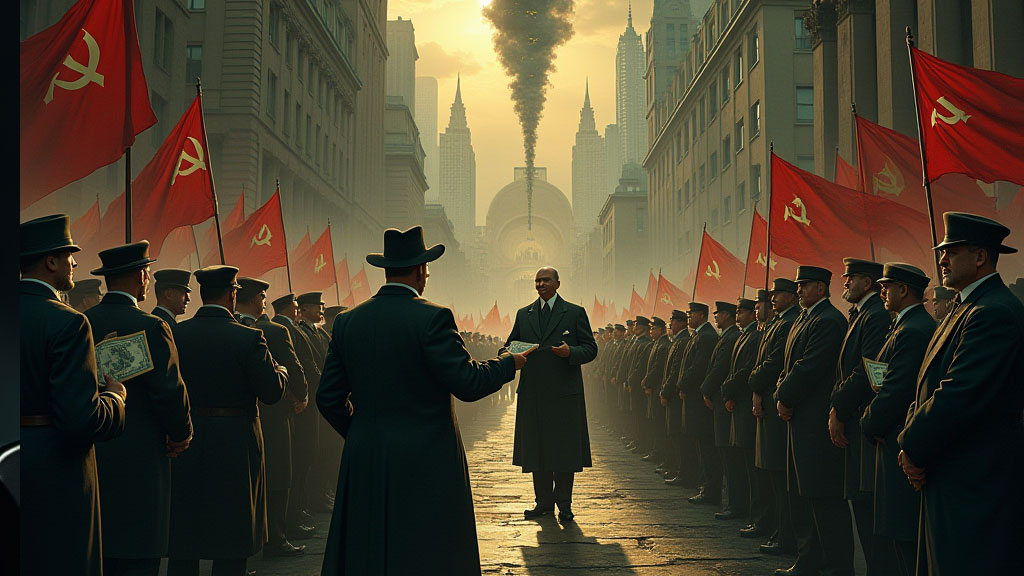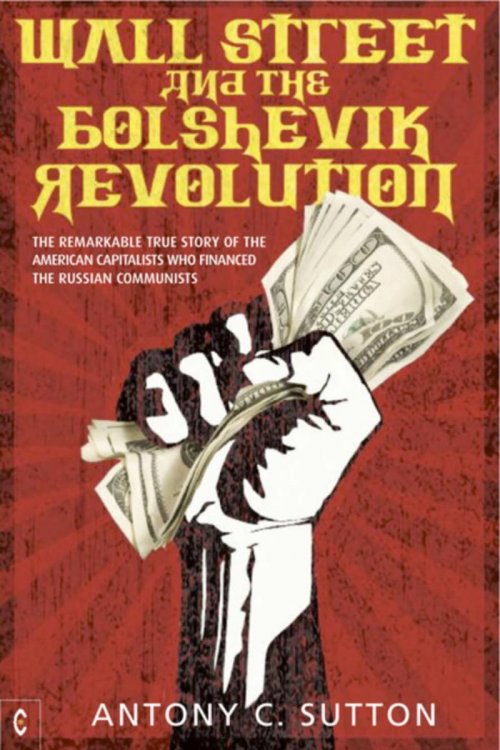The story of Soviet Russia’s emergence as a global power post-World War II is shrouded in intrigue, betrayal, and an ironic twist of fate orchestrated by some of the wealthiest figures in American finance. While the world viewed the USSR as the embodiment of anti-capitalist ideals, a closer look reveals that it was, in fact, the capitalist elites who played a crucial role in its survival and rise.
The Birth of the “Evil Empire”
In the aftermath of World War II, Soviet Russia, battered and bankrupt, stood on the brink of collapse. With over 40 million citizens lost to the war and another 66 million purged by the Bolsheviks, the USSR was a shadow of its former self. Yet, instead of being consigned to history’s dustbin, the Soviet Union was propped up by the West—specifically, by the American financial elite. This paradox was not lost on observers who noted, “Soviet Russia was allowed to emerge from the destruction of World War II as one of the victors, solely because she was needed as the next ‘evil empire’ against which the civilized West could launch a new Crusade.”
The World Order, a term often used to describe the elite class of bankers and industrialists who wielded immense influence over global affairs, ensured the survival of the Soviet state. The aid flowed not out of benevolence, but out of a strategic necessity to maintain an adversary—a power that could justify the expansion of Western influence and military spending.
The American International Corporation: A Financial Conspiracy
The American International Corporation (AIC), formed in 1915, played a pivotal role in funneling aid to the Bolsheviks. The corporation was no ordinary business entity; it was a coalition of America’s most powerful financial players, including J.P. Morgan, the Rockefellers, and the National City Bank. Frank Vanderlip, a key figure in the creation of the Federal Reserve, served as the Chairman of the Board. The directors of AIC were a who’s who of American elite: Pierre du Pont, Otto Kahn of Kuhn, Loeb Co., George Herbert Walker (grandfather of President George H. W. Bush), and Percy Rockefeller, among others.
It is startling to consider that these titans of capitalism were financing a revolution that ostensibly sought to destroy everything they stood for. However, as Wilson later observed, “There are men in the United States of the finest temper who are in sympathy with Bolshevism because it appears to them to offer that regime of opportunity to the individual which they desire to bring about.”
Lenin’s Blueprint and Wall Street’s Vision
Vladimir Lenin, the architect of the Bolshevik Revolution, outlined a program that resonated deeply with these American financiers. His 1917 work, The Threatening Catastrophe, proposed the nationalization of banks and syndicates, the abolition of commercial secrets, and the compulsory organization of the population into unions—measures that would place all economic power under state control. As Lenin argued, “The state for the first time would be in a position to survey all the monetary operations, then to control them, then to regulate economic life.”
This blueprint was not merely a vision for Soviet Russia but a model that would influence future American policies. The New Deal of Franklin D. Roosevelt, the post-war Labour Government in England, and even the operations of the U.S. Internal Revenue Service bore the hallmarks of Lenin’s program.
Financing Revolution: A Capitalist Endeavor
The financial backing of the Bolsheviks did not end with the formation of AIC. In 1917, President Woodrow Wilson dispatched Elihu Root, a Kuhn Loeb lawyer, to Russia with $20 million from his Special War Fund to support the Bolsheviks. This move was a continuation of a pattern established earlier, when Jacob Schiff, a leading figure at Kuhn, Loeb & Co., had spent $20 million to finance the 1905 Russian Revolution.
The generosity of Wall Street extended beyond the White House. J.P. Morgan & Co. also provided significant financial aid. Colonel Raymond Robins led a Red Cross Mission to Russia, ostensibly for humanitarian purposes, but with millions in cash raised by Henry P. Davison of J.P. Morgan, the mission became a lifeline for Lenin’s regime. As one observer remarked, “The involvement of the J.P. Morgan firm with the Bolshevik Revolution is revealed in the actions of Dwight Morrow, who was himself active in furthering official relations between Soviet emissaries and the State Dept.”
The Paradox of Capitalism and Communism
The involvement of American capitalists in the Bolshevik Revolution underscores a profound paradox: the same men who built the capitalist system were also its greatest subverters. Their support for the Bolsheviks was not an act of ideological alignment but a strategic maneuver to maintain control over global economic forces. By supporting a totalitarian state, they could suppress competition, stifle innovation, and ensure their dominance in a world where the state, rather than the market, dictated economic outcomes.
Lenin’s program, as it turned out, was not just the foundation of Soviet communism—it was a blueprint for a new world order where the state served the interests of the wealthy elite. As one commentator put it, “The Lenin program is the program of the big rich precisely because it abolishes private property, and puts it under the control of the state. The state [in turn] is controlled by the big rich, the World Order.”
A Hidden Agenda Revealed
The story of Soviet Russia’s rise to power, backed by American financiers, challenges the traditional narrative of capitalism versus communism. It reveals a hidden agenda, where the lines between ideologies blur, and the pursuit of power and control transcends political labels. As history shows, the real struggle was not between capitalism and communism but between the global elite and the rest of humanity.
This tale of conspiracy and collusion serves as a reminder that the forces shaping our world are often hidden in plain sight, their true motives concealed behind the facades of ideology and national interest.




